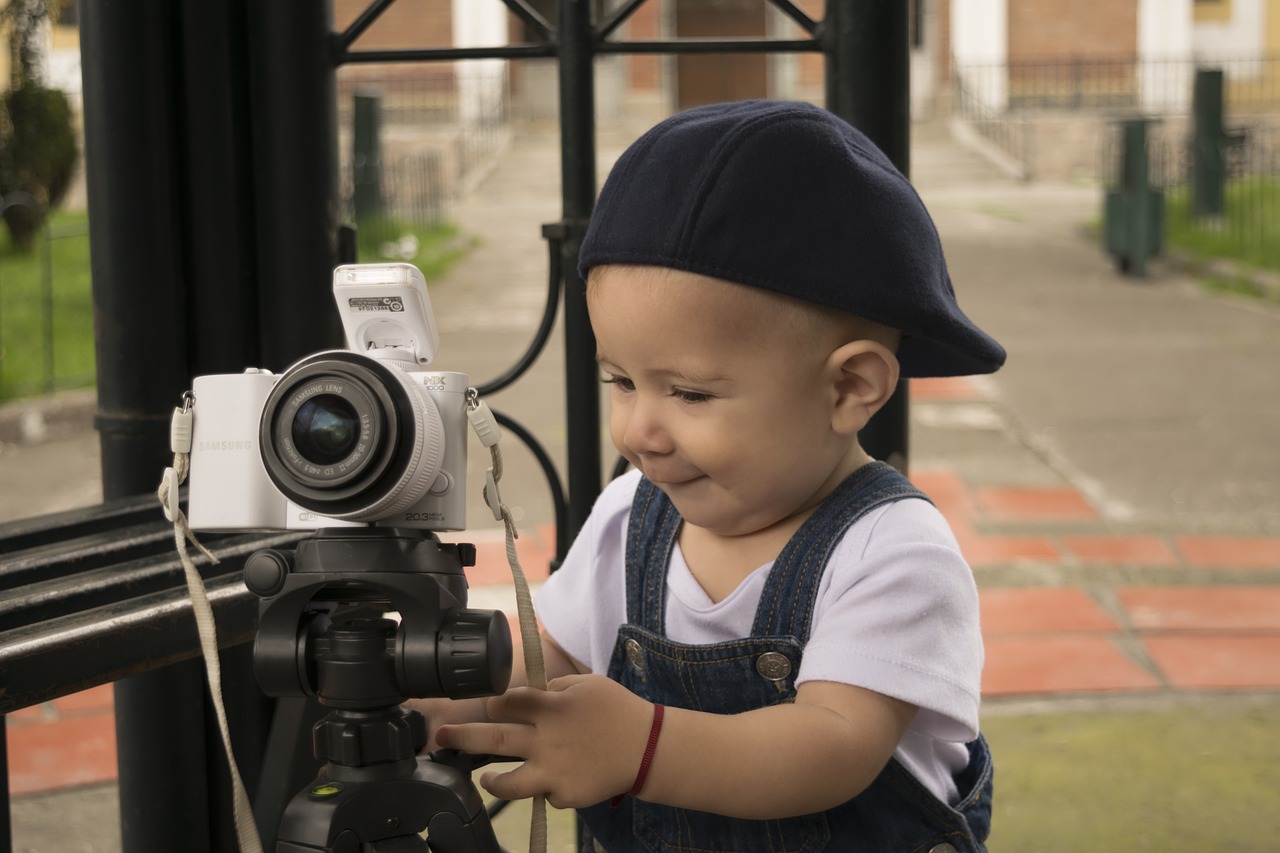
In today’s digital age, kids are increasingly interested in photography, and there’s no better way to nurture their creativity and keep them engaged than by getting them their very own camera. But with so many options available, it can be overwhelming for parents to choose the right one. This ultimate guide will walk you through the essential considerations for selecting the perfect kids’ camera to inspire their passion for photography while ensuring their safety. From understanding the basics of kids’ cameras and prioritizing safety features to exploring picture quality, user-friendly options, creative capabilities, and budget considerations, this comprehensive guide covers everything you need to know to make an informed decision. Additionally, it provides insights on accessories, encouraging photography skills, handling upgrades, and addressing frequently asked questions. So, get ready to embark on an exciting journey of capturing memories safely and creatively with your child! In today’s digital age, kids are increasingly interested in photography, and there’s no better way to nurture their creativity and keep them engaged than by getting them their very own camera. But with so many options available, it can be overwhelming for parents to choose the right one. This ultimate guide will walk you through the essential considerations for selecting the perfect kids’ camera to inspire their passion for photography while ensuring their safety.
Chapter 1: Understanding the Basics of Kids’ Cameras
When it comes to kids’ cameras, there are a few different types you can choose from. The most common options are digital cameras, instant cameras, and film cameras. Digital cameras are a popular choice as they allow children to instantly see the photos they’ve taken, providing immediate gratification. Instant cameras are also a fun option, as they can instantly print out physical copies of the photos, which can be great for crafts or scrapbooking. Film cameras, on the other hand, offer a more nostalgic experience, requiring children to wait for the film to be developed to see their pictures.
When considering age-appropriate features, it’s important to take into account the child’s age and skill level. Look for cameras that have simple controls and intuitive interfaces. Some cameras designed for younger children may have larger buttons and colorful designs to make it easier for them to use. For older kids, cameras with more advanced features and settings can be a great way to foster their creativity and encourage experimentation.
Introducing photography to children can have numerous benefits. Not only does it allow them to explore their creativity and develop their artistic sense, but it also helps them develop their observation skills, attention to detail, and storytelling abilities. Photography can also be a great confidence booster for children, as they can see their progress and feel proud of their creations. Additionally, photography provides a unique way for children to document their experiences and create lasting memories.
Chapter 2: Safety First
When choosing a kids’ camera, safety should be a top priority. Look for cameras that are specifically designed for children, with rounded edges and durable construction. Avoid cameras with small parts that can easily break off and become choking hazards. It’s also important to consider the materials used in the camera’s construction. Opt for cameras made from non-toxic materials that are free from harmful chemicals.
Parental control features are another essential aspect of a kids’ camera. Look for cameras that allow parents to set limits on usage, control access to certain features, and monitor the content that is being captured. Some cameras also have built-in privacy settings that allow parents to restrict the sharing and uploading of photos.
In today’s digital world, privacy and data security are major concerns. When choosing a kids’ camera, look for cameras that have built-in measures to protect your child’s privacy. Ensure that the camera has secure storage options and that photos cannot easily be accessed or shared without appropriate consent.
Chapter 3: Picture Quality and Resolution
Picture quality and resolution are important factors to consider when choosing a kids’ camera. Look for cameras with higher megapixels, as this determines the clarity and sharpness of the images. The higher the megapixels, the more detail can be captured in each photo. However, it’s important to note that for young children, extremely high megapixels may not be necessary, as their focus will likely be more on having fun and experimenting with photography.
In addition to megapixels, the lens quality also plays a significant role in the image quality. Look for cameras with good lenses that can capture clear and vibrant images, even in different lighting conditions. Some cameras come with features like zoom or autofocus capabilities, which can be helpful for children when composing their shots.
Understanding image formats is also important. Most kids’ cameras save photos in common formats like JPEG or PNG. JPEG files are smaller in size and are great for sharing and uploading photos online. PNG files, on the other hand, have higher quality but are larger in size. It’s essential to consider the storage capacity of the camera and whether it supports different file formats.
Chapter 4: User-Friendly Features
A kids’ camera should be simple and easy for children to use. Look for cameras with intuitive interfaces and straightforward controls. Some cameras have minimal buttons and rely heavily on touchscreens, which can make them more user-friendly for younger children. Others may have larger buttons or dials that are easier for kids to manipulate. Consider the size and ergonomics of the camera as well, ensuring that it is comfortable for your child to hold and operate.
Having access to user manuals and tutorials is another important feature to consider. Look for cameras that provide clear instructions and guidance on how to use the camera’s features. Some cameras may also offer online tutorials or video guides to help children get started. This can be especially helpful for kids who are new to photography and may need some extra assistance.
Chapter 5: Creative Options
One of the advantages of kids’ cameras is the ability to explore creative options. Look for cameras that offer built-in filters, effects, and creative modes. These features can allow children to experiment with different looks and styles in their photos, adding an extra touch of fun and creativity to their photography. Some cameras also come with built-in games and entertainment features, which can provide additional entertainment for kids during their photography adventures.
Customizable frames and stickers are another creative option to consider. Some cameras have the ability to add frames or stickers to the photos, allowing children to personalize their pictures and make them more unique. This can be a great way to encourage kids to express their individuality and develop their artistic sense.
It’s important to emphasize the importance of artistic expression when introducing photography to children. Encourage them to experiment with different angles, perspectives, and subject matters. Teach them the basics of composition and lighting, but also allow them the freedom to express their own creativity and capture the world as they see it.
Chapter 6: Storage and Memory
When it comes to storage and memory, there are a few options to consider. Some kids’ cameras come with internal storage, allowing children to save their photos directly onto the camera. However, the capacity of internal storage can be limited, so it’s important to check how many photos can be stored before needing to transfer them elsewhere.
Another option is to use memory cards. Memory cards provide additional storage space and allow for easy transfer of photos to other devices. Look for cameras that support common memory card formats like SD cards, as this will give you more flexibility in managing and storing your child’s photos.
Cloud storage options are also becoming increasingly popular. Some cameras offer the ability to connect to cloud services, allowing for automatic backup and storage of photos. This can be a convenient option for parents who want to ensure their child’s photos are backed up and accessible from multiple devices.
Chapter 7: Battery Life and Power Options
Battery life is an important consideration when choosing a kids’ camera, especially if your child likes to take a lot of photos or if you plan on using the camera for extended periods of time. Look for cameras with longer battery life to minimize interruptions in your child’s photography adventures. Some cameras come with rechargeable batteries, while others use disposable batteries. Consider your preferences and needs when deciding which power option is the best fit for you.
In addition to battery life, some cameras offer power-saving features. These features can help prolong the battery life by automatically turning off the camera or entering a sleep mode when it’s not in use. This can be useful for kids who may forget to turn off the camera after taking photos.
Chapter 8: Connectivity and Sharing
Connectivity and sharing options are becoming increasingly important in today’s digital world. Look for cameras with Wi-Fi and Bluetooth capabilities, as this allows for easy transfer of photos to other devices like smartphones and tablets. This can be particularly useful for sharing photos with family and friends or for uploading them to social media platforms.
Compatibility with smartphones and tablets is another important consideration. Some cameras have dedicated apps that can be installed on smartphones or tablets, allowing for seamless transfer and sharing of photos. This can make it easier for kids to access and edit their photos on their own devices.
Sharing options for both kids and parents should also be taken into account. Some cameras offer restricted sharing options that allow parents to review and approve any photos before they are shared. This can help ensure that only appropriate content is being shared and protect your child’s privacy and safety.
Chapter 9: Budget Considerations
When it comes to the budget, it’s important to set a reasonable budget that aligns with your financial situation. Consider how much you are willing to spend on a kids’ camera and what features are most important to you. Determine whether the camera is a long-term investment or something that your child may outgrow quickly.
Exploring budget-friendly options can also be a good idea, as there are many affordable kids’ cameras available on the market. While they may not have all the bells and whistles of more expensive cameras, they can still provide a fun and engaging photography experience for children. Look for cameras that offer the essential features you’re looking for, without breaking the bank.
Evaluating long-term value is important when considering the budget. Some cameras may have additional features or expandable options that can grow with your child as they develop their photography skills. It’s worth considering whether the camera has the potential for continued use and growth, or if it is more suited for younger children who may eventually outgrow it.
Chapter 10: Reviews and Recommendations
Researching online reviews and expert opinions can be a helpful way to gather information about different kids’ cameras. Look for reputable sources that provide unbiased and detailed reviews. Reading about other parents’ experiences and recommendations can also give you valuable insights into the pros and cons of different cameras.
Seeking recommendations from other parents who have already gone through the process of choosing a kids’ camera can be particularly helpful. They may be able to provide insights into specific cameras that they found to be well-suited for their children. Additionally, if possible, try to visit a store and test out a few cameras in person. This can give you a hands-on experience and help you make a more informed decision.
Chapter 11: Accessories and Extras
When selecting a kids’ camera, it’s worth considering any additional accessories or extras that may enhance your child’s photography experience. Camera cases and protection are important to ensure the camera is well-preserved and protected from bumps and scratches. Tripods and selfie sticks can be useful for stabilizing the camera or capturing group shots. Additional lenses and accessories can also expand the creative possibilities for your child.
Maintenance and cleaning tips are also worth considering, as cameras are susceptible to dust, dirt, and fingerprints. Teaching your child how to properly clean and care for their camera can help prolong its lifespan and ensure optimal performance.
Chapter 12: Encouraging Photography Skills
Once you’ve chosen the perfect kids’ camera, it’s important to foster your child’s photography skills and encourage their passion for the art. One way to do this is by suggesting photography projects and challenges. This can help stimulate their creativity and provide them with a sense of purpose and direction in their photography.
Finding photography classes or online resources can also be beneficial in nurturing your child’s photography skills. Look for age-appropriate classes or workshops that can teach them the technical aspects of photography, as well as provide opportunities for them to interact with other young photographers and share their work.
Fostering a love for photography in children is not only about the technical skills, but also about instilling a sense of appreciation for the art form. Encourage your child to explore different genres of photography and introduce them to famous photographers and their works. Visit photography exhibitions or galleries and discuss the various styles and techniques used by different artists.
Chapter 13: Frequently Asked Questions
Addressing common concerns and queries is important when it comes to choosing a kids’ camera. This chapter will provide answers to some frequently asked questions to help you make an informed decision.
Troubleshooting tips can also be helpful in case any issues or challenges arise with the camera. From dealing with technical glitches to handling common errors, having some troubleshooting knowledge can save you time and frustration.
As your child’s skills evolve, you may need to consider upgrading their camera to a more advanced model. This section will provide guidance on how to handle upgrades and transition to a camera that suits their growing needs and abilities. It’s important to encourage your child’s progress and provide them with the tools necessary to continue developing their photography skills.
Choosing the best kids’ camera is an exciting process that can help nurture your child’s creativity and passion for photography. By understanding the basics of kids’ cameras, prioritizing safety and security, considering picture quality and user-friendly features, exploring creative options, and taking into account storage, battery life, connectivity, and budget considerations, you can confidently select a camera that will inspire and engage your child. With the right camera in their hands, your child can embark on a journey of artistic expression and create lasting memories.



















